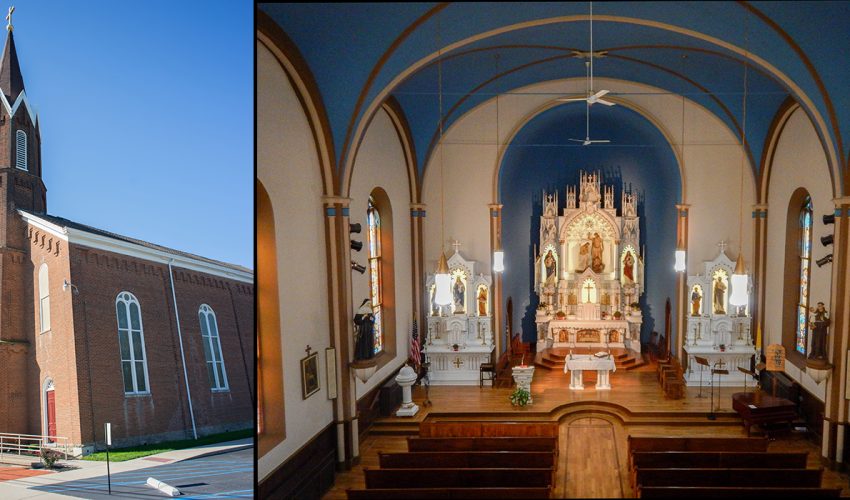NEWS
Congregations Unite to Save Four Historic Churches
Four Catholic parishes in southeast Indiana found strength in numbers and applied their collective resources to preserve and restore four beloved community churches.

In recent years, declining membership has forced many Catholic parishes to consolidate. In some cases it’s been the death knell for historic churches, as parishioners vacate impressive structures built to house much larger congregations. That scenario was set to unfold in southeast Indiana, until a priest came up with another plan that saved four landmarks and strengthened congregational ties.
In June 2013, the Archdiocese of Indianapolis announced plans to consolidate four rural southeast Indiana parishes into one congregation, merging St. Paul, St. John, St. Joseph, and St. Martin into All Saints Parish. Congregations were given until 2017 to decide upon a single place of worship — one of the existing historic churches or a newly constructed building.
Community outcry, including petitions to the Vatican, inspired Father Jonathan Meyer to suggest an alternative. Understanding the importance of keeping these congregations active in their own communities, he convinced the bishop to allow the four churches, unified as one parish, to remain open and active, and also to restore each of the four historic churches.
All four buildings were restored within an astonishing six months, thanks to the countless hours of volunteer work by parishioners from the congregations.

Each of the churches received a new paint scheme in stark contrast to neutral palettes introduced in the twentieth century. St. Paul’s — at 1837, one of the oldest Catholic churches in the state — stands out with an interior that features three shades of blue and brick red highlighting ceiling arches and ribs. The church got new inlaid hardwood floors, repainted statues, and remnants of the historic communion rail repurposed as part of an altar and ambo.
Parishioners chose a similar palette to enliven the interior of St. John in Dover, built in 1874. Workers painted the ceiling a shade of blue also used at St. Paul. In fact, the color repeats through all four churches, lending a sense of unity to the new All Saints parish. While St. John also received upgrades to floors, lighting, and sound systems – as did all the churches – the most extraordinary change is reintroduction of a large, ornate reredos.
The reredos is the tall structure behind the altar, designed to serve as beautiful backdrop. Many also house important statuary. St. John’s original reredos, seen in photographs from the turn of the nineteenth century, had been removed years ago and replaced with a much smaller version, out of scale to the soaring space. Father Meyer tracked down a more appropriately scaled historic replacement salvaged from a church in Pennsylvania. When the new reredos arrived in 24 separate pieces, local teen Matthew Kuebel took on the daunting task of organizing its assembly and installation as part of his Eagle Scout project.
In the small town of St. Leon, renovation at the 1861 St. Joseph’s church include a vibrant blue ceiling with golden stencils, new flooring, and tech upgrades. Artists painted angels above the altar, returning a beloved feature lost when the originals were painted over years ago. Though they aren’t in the same location or design, the new angels are a particular favorite among parishioners old enough to remember the originals.
Opened in 1917, Yorkville’s St. Martin is the youngest of the churches, a distinction evident in its more classical design. Its refreshed paint scheme was designed to highlight the many Austrian stained-glass windows added to the church in 1929. Renovations at St. Martin also included new paint for the Lourdes Grotto and frames for the Stations of the Cross.
All four churches unveiled their revived interiors this summer. The restoration project has fostered a greater connection between the members of the new parish, and the congregation continues to grow — proof that retaining the historic churches in their own communities was the right thing to do. For more information on All Saints Parish, visit http://www.allsaintscatholic.net/.
Stay up to date on the latest news, stories, and events from Indiana Landmarks, around the state or in your area.




